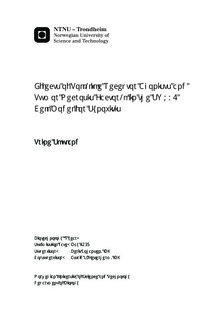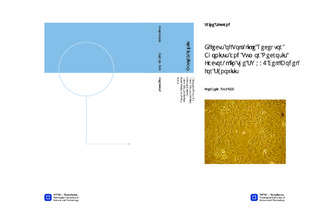| dc.description.abstract | Rheumatoid arthritis (RA) is a chronic, autoimmune joint disease characterized by a massive infiltration of immune cells and synovial lining hyperplasia. This ultimately leads to synovitis, i.e. inflammation of the synovial membrane, and excessive bone loss. Certain bone remodeling components are known to play a key role in the RA pathogenesis: receptor activator of nuclear factor-κB ligand (RANKL), osteoprotegerin (OPG), and dickkopf homolog 1 (DKK1). RANKL is a ligand essential to differentiation of the bone-degrading osteoclasts, while OPG can hinder this by competitive binding of RANKL. DKK1 inhibits activation of the bone-forming osteoblasts. In addition, toll-like receptors (TLRs) are believed to be central in RA. TLRs bind pathogen associated molecular patterns (PAMPs), but also damage associated molecular patterns (DAMPs) found on molecules present in inflamed joints. TLR ligand binding activates production of pro-inflammatory mediators.The exact events and pathways involved in RA are not fully understood. By using the synovial fibroblast (SF) cell line, SW982, as a model for synovitis, this master s thesis aims to clarify certain signaling events. More specifically, the potential involvement of phospholipase A2 (PLA2) and cyclooxygenase (COX) in expression of bone remodeling genes, in response to TLR agonists and tumor necrosis factor (TNF)-α, was investigated. A known downstream effect of TLR activation is production of the pro-inflammatory cytokine TNF-α. Consequently, TNF-α s effect on the TLR expression was also studied. Gene expression analysis, by quantitative polymerase chain reaction (qPCR), revealed that the SW982 cells express OPG and DKK1, and probably RANKL. In addition, the cells express TLR1-6, and possibly TLR7 too. It was shown, for the first time, that a TLR1/2 agonist (Pam3CSK4), a TLR2/6 agonist (FSL-1), and a TLR3 agonist (Poly(I:C)), increase the OPG and DKK1 gene expression in SW982 cells. The OPG mRNA increase was also detected at protein level by performing enzyme-linked immunosorbent assay (ELISA). Furthermore, activation of TLR1/2 and TLR2/6 was found to strongly induce IL-6 and COX-2 gene expression. It was discovered that cPLA2 and COX are involved in TLR1/2-mediated induction of DKK1, IL-6 and COX-2 gene expression, and possibly OPG expression. For the TLR2/6-mediated expression of these genes, the involvement of cPLA2 and COX is not as pronounced as for TLR1/2, but still likely. Altogether, these results indicate that the prostaglandin (PG) pathway is triggered upon TLR activation. Besides affecting the mentioned genes, this will lead to increased production of PGs. Prominent PG production is often observed in inflammatory conditions like RA. The activity of PLA2s in response to TLR agonists was studied by radioactivity assays. Activation of TLR1/2, TLR2/6 and TLR3 was found to increase the release of the inflammatory intermediate arachidonic acid (AA) the first precursor of PG synthesis. Further assays suggested that the GIVA cPLA2 is the main PLA2 responsible for the increase in AA release, with possible involvement of Ca2+-independent PLA2 (iPLA2). Upon investigation of TNF-α s effects, it was found that the SW982 cells increase their DKK1, TLR2 and TLR3 gene expression. The no-response results for RANKL, OPG, TLR1, and TLR4-7, and the no-response results regarding cPLA2 s involvement, were inconclusive due to non-optimal TNF-α stimulation. In conclusion, even though the bone-protective OPG is up-regulated by TLR activation, this activation may have more negative effects in the context of RA: DKK1, COX-2, IL-6 and AA release are increased, and these are all contributors of joint destruction in RA. In addition, OPG may also exert a negative effect. The protein can prevent apoptosis of SFs and thereby contribute to synovial hyperplasia. Because cPLA2 seems to be involved in the increase of the mentioned components, the enzyme may be an attractive target for reducing inflammatory responses set off by TLRs. | nb_NO |

